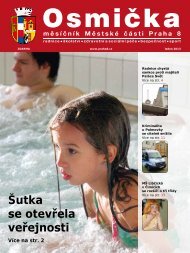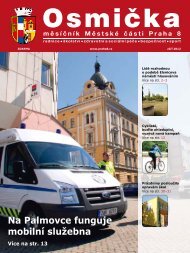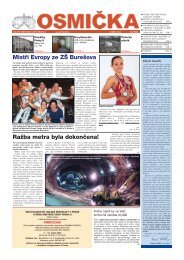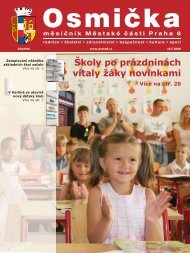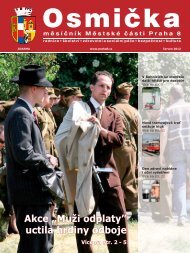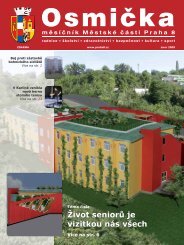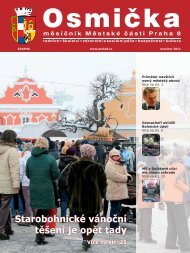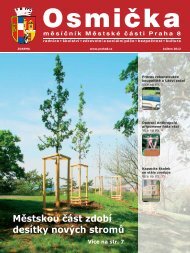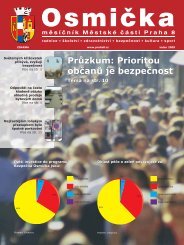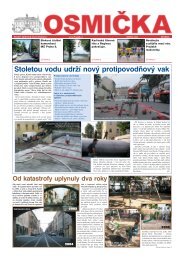Create successful ePaper yourself
Turn your PDF publications into a flip-book with our unique Google optimized e-Paper software.
The Jewish entrepreneurial family came to Bohemia from Austria<br />
around the middle of the 19th century. This side of the family was<br />
founded by wholesaler and industrial magnate Moritz Grab (1810<br />
–1895), though the most prominent member of the family was his<br />
son Hermann Grab (1843–1900), who contributed significantly to<br />
industrial development in Libeň. He entered the business in Libeň<br />
as a director of the M. Grab synové family operation. Around 1876<br />
he and his brother Josef bought the Košinka farmstead (House<br />
No. 106) where he established a large oilcloth factory in 1879–1880.<br />
Grab’s imperial and royal leatherette, oilcloth and carpet monopoly<br />
factory was the largest of its kind in the Austro-Hungarian monarchy<br />
toward the end of the 19th century.<br />
The family villa underwent extensive renovation in 1928–1929 that<br />
gave it its present form. The original villa had two floors with a smaller<br />
ground plan. The renovation included an addition to the second<br />
floor and the garret and the building were extended north along<br />
the entire longitudinal line. The result of the alteration was a twostorey<br />
building with a cellar and a garret with pan-and-roll roofing,<br />
dormer windows and receding pentiled mansard walls. The massive<br />
attic railing with terraces on the second floor is decorated with sculptures<br />
on the south and west sides. Above the north entrance is a large<br />
terrace with a decorative railing with a balustrade and two statues<br />
of angels holding lanterns. The richest decorations can be found on<br />
the western frontage. High Ionic pilaster orders connect the ground<br />
floor to the first storey and the whole length of the facade is bordered<br />
with a ground terrace with a designed railing and a balustrade decorated<br />
with lanterns. The terrace is divided in the middle by a staircase<br />
and a buttress creating an entrance (a loggia) to the music room. It is<br />
intersected by two high Ionic columns on a square base bearing a second<br />
floor balcony. Above the columns, on the attic railing, is a richly<br />
decorated relief coat of arms with statues as shield bearers.<br />
When Emanuel Grab died in 1932, Dr. Hugo Grab became the<br />
sole owner of the villa. In 1936, House Number <strong>502</strong> together with<br />
the garden and a gardener’s house were rented to the head teacher,<br />
Josefina Victoriusová-Mockerová, who established a girls’ home<br />
on the site, principally for well-to-do boarders.<br />
In 1939, compulsory administration was imposed on the property<br />
of Dr. Max Josef Grab and the inheritance of Dr. Hugo Grab. Under<br />
the German occupation the entire real estate was confiscated as Jewish<br />
property by the Gestapo and the Reich Protector charged Adalbert<br />
Lederer with its administration in 1943.<br />
The building was then used by the Hitler Youth – Hitlerjugend.<br />
During the air raid of the allied Anglo-American forces on Vysočany<br />
on 25 March 1945, the Košinka farmstead was hit by four bombs.<br />
The villa was also partly damaged by bullets during the Prague<br />
Uprising, when an exchange of gunfire between members of the<br />
Hitlerjugend and Czech patriots took place there.<br />
After the Second World War the property of racially persecuted<br />
Austrian nationals that was considered alien property was subjected<br />
to the national administration without their participation. Based on



